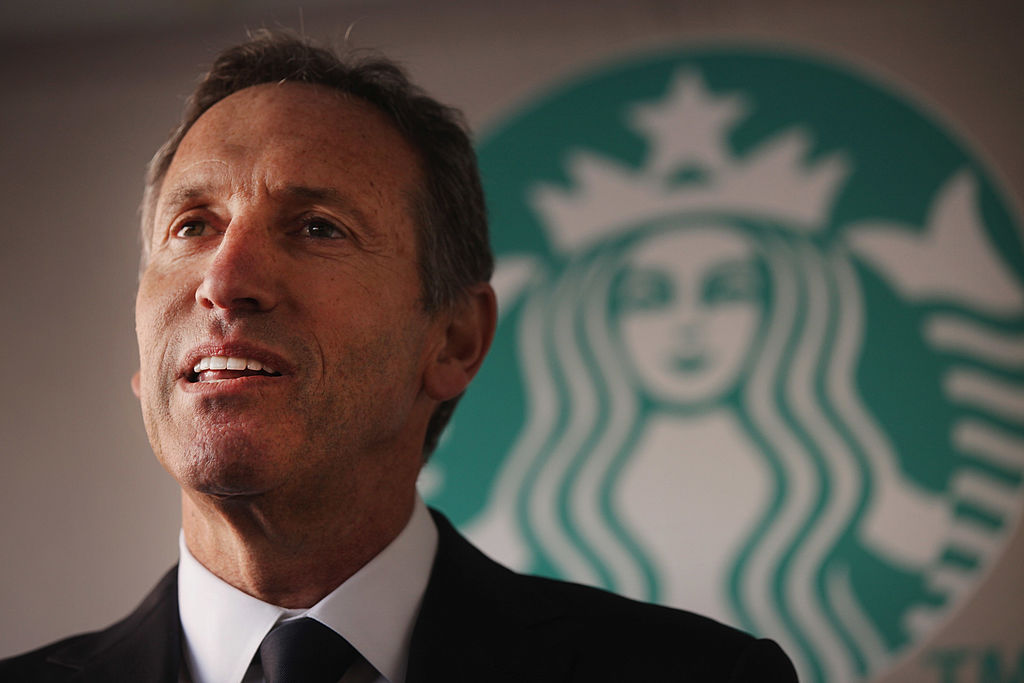
☕ Starbucks is marking its 50th anniversary.
If you think that number must be off by a couple of decades, you’re not alone.
The chain only made its way into most of our lives in the 1990s. Its success was a slow brew, requiring several recipe changes trib.al/gq9fyqV
If you think that number must be off by a couple of decades, you’re not alone.
The chain only made its way into most of our lives in the 1990s. Its success was a slow brew, requiring several recipe changes trib.al/gq9fyqV
The original Starbucks wasn’t a café.
It sold gourmet beans and equipment so customers could make their own coffee.
In 1981, a sales rep visited to see why four small stores in Seattle were selling more of a simple drip setup than all of Macy’s trib.al/jW0jdDX
It sold gourmet beans and equipment so customers could make their own coffee.
In 1981, a sales rep visited to see why four small stores in Seattle were selling more of a simple drip setup than all of Macy’s trib.al/jW0jdDX

The sales rep's name was Howard Schultz.
Starbucks could go national, he told the owners, with “dozens of stores, maybe even hundreds,” and become a brand-name “synonymous with great coffee.” He wanted to bring ubiquitous cafés to the U.S. trib.al/jW0jdDX
Starbucks could go national, he told the owners, with “dozens of stores, maybe even hundreds,” and become a brand-name “synonymous with great coffee.” He wanted to bring ubiquitous cafés to the U.S. trib.al/jW0jdDX

When Starbucks wouldn’t take Schultz's idea beyond a test store, he started his own company, Il Giornale.
In 1987, the owners sold Starbucks to Schultz, and he merged it with Il Giornale, kept the older name, and opened stores in Chicago trib.al/jW0jdDX
In 1987, the owners sold Starbucks to Schultz, and he merged it with Il Giornale, kept the older name, and opened stores in Chicago trib.al/jW0jdDX

Chicago was far from the latte-loving Pacific Northwest.
“Until we succeeded in Chicago, we couldn’t prove that our idea was transportable throughout North America,” said Schultz trib.al/jW0jdDX
“Until we succeeded in Chicago, we couldn’t prove that our idea was transportable throughout North America,” said Schultz trib.al/jW0jdDX

The first few years were rough:
💲 Prices needed to rise to cover higher rents and wages
❄️ Nobody wanted to venture outside for coffee in the winter
But by 1990, the Chicago stores were working, and the company turned the first profit of the Schultz era trib.al/jW0jdDX
💲 Prices needed to rise to cover higher rents and wages
❄️ Nobody wanted to venture outside for coffee in the winter
But by 1990, the Chicago stores were working, and the company turned the first profit of the Schultz era trib.al/jW0jdDX

In 1991, the national rollout truly began, with entry into Los Angeles. The following year, Starbucks went public, garnering $25 million to expand even further.
Coffeehouses existed in the U.S. before Schultz came along, but they occupied a narrow niche trib.al/jW0jdDX
Coffeehouses existed in the U.S. before Schultz came along, but they occupied a narrow niche trib.al/jW0jdDX

In 1996, Starbucks abandoned the hard-edged, contemporary store design in favor of a cozier aesthetic with more comfortable seating.
Spotting a business opportunity in a social critique, Starbucks began to think of its stores as “third places” trib.al/jW0jdDX
Spotting a business opportunity in a social critique, Starbucks began to think of its stores as “third places” trib.al/jW0jdDX

Today the U.S. has more than 37,000 coffeehouses, with Starbucks accounting for about 15,000.
Starbucks took a specialty concept and made it a mass phenomenon, with several lasting effects on American business and culture trib.al/jW0jdDX
Starbucks took a specialty concept and made it a mass phenomenon, with several lasting effects on American business and culture trib.al/jW0jdDX

• • •
Missing some Tweet in this thread? You can try to
force a refresh















